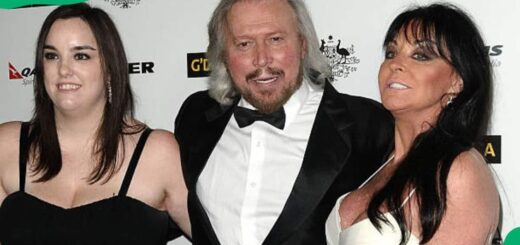Bruce Willis Leaves Behind A Fortune That Makes His Family CRY
There are fortunes that make people proud, and there are fortunes that make families weep. The story of Bruce Willis — the man who once made the world roar with his defiant cry “Yippee-Ki-Yay” in Die Hard — is a haunting reminder of that paradox.
He built a $250 million empire, a kingdom of fame and luxury that few could dream of, yet he lost the one thing money could never buy: the ability to speak, to understand, to simply say goodbye.
Born in 1955 in West Germany to a working-class family, Bruce Willis grew up amid the cold walls of a rented house in New Jersey.
His father was an American soldier, his mother a German woman who struggled to keep the family afloat. As a child, Willis suffered from a severe stutter that made every word feel like walking barefoot on broken glass. His classmates mocked him mercilessly — they called him “Buckbuck.”

But under the warm glare of his high school stage lights, the stutter vanished. In that moment, he discovered the magic of acting — not just as a career, but as salvation.
With an old suitcase and half a sandwich, Willis left New Jersey for New York, scraping by with odd jobs — bodyguard, driver, janitor — before settling behind a bar as a bartender.
Each night, he performed for his patrons, creating a bolder, brasher alter ego named “Bruno.” That persona would become the seed of every tough, quick-witted hero he would later bring to life on screen.
Then came 1985. Willis landed the role of David Addison in Moonlighting and went from pouring drinks to winning a Golden Globe and an Emmy.

But it was Die Hard (1988) that immortalized him. With a record-breaking $5 million paycheck and over $1.4 billion in global box office across the franchise, Bruce Willis became a living legend — the face of the modern action hero.
He invested his success wisely. Mansions in Beverly Hills, a ranch in Montana, a lakeside retreat in Idaho, and property in Turks & Caicos — each a sanctuary from the chaos of Hollywood.
His garage gleamed with a Rolls-Royce, a Porsche 911, and a Cadillac Escalade. But beneath the glamour lay a private confession: “What I crave most,” he once said, “is time — the only thing money can’t buy.”
In 1987, Willis married Demi Moore, one of Hollywood’s brightest icons. Together they were the “golden couple” of the decade, adored on red carpets and envied behind closed doors.
They had three daughters and, for a while, seemed untouchable. But fame has a way of stealing moments. Their marriage ended in 2000 — not in betrayal, but in exhaustion.

The beautiful irony? They didn’t let love die. Demi remained a close friend, often joining Willis’s second wife, Emma Heming, and their blended family in caring for him with unshakable devotion.
Around 2020, subtle signs began to appear. Willis took smaller roles, with fewer lines. Directors shortened his dialogue, used earpieces to help him remember cues.
Then, in March 2022, the truth emerged: he had been diagnosed with aphasia, a condition that robs one’s ability to speak and understand language. A year later, it progressed into frontotemporal dementia (FTD) — a cruel disease that slowly erases language, movement, and self.
The hero who once outran explosions and bullets now fights a silent battle against his own mind. Yet he is not alone.

Around him stands what his family calls their “fortress of love” — Emma Heming Willis, Demi Moore, and his five daughters: Rumer, Scout, Tallulah, Mabel, and Evelyn.
They communicate now through music, through touch, through moments of light. In one viral video, Willis gently rests his trembling hand on his youngest daughter’s back — a simple gesture that said everything words could not.
Today, the world no longer speaks of Bruce Willis’s $250 million fortune. What endures is the way he lived — with courage, humor, and deep love. His voice may be gone, but his silence speaks louder than ever. It tells a story not of loss, but of transcendence.
Bruce Willis may no longer be able to speak, yet in every glance, every breath, every faint smile, he continues to tell the greatest story of his life — the story of a man who taught the world that you don’t need words to be heard.


